MUFSD
Newsletter #1
November 2016
Ongoing Storm Water Management Program
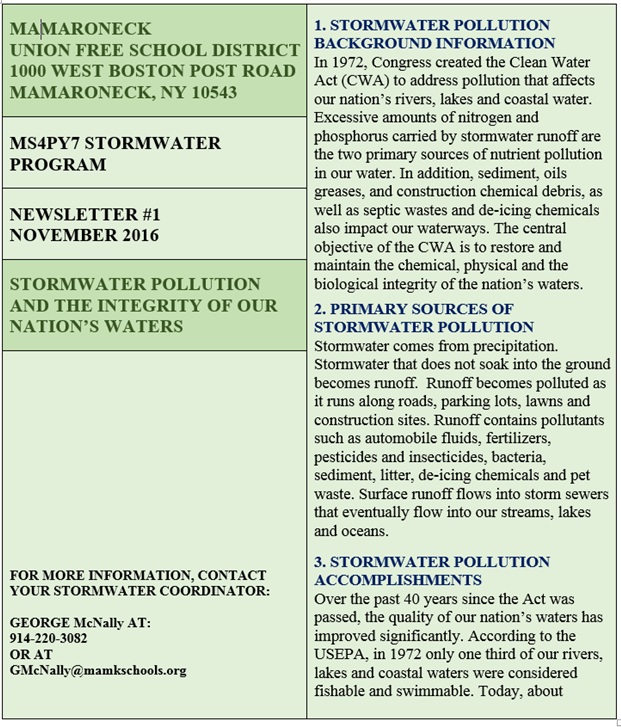
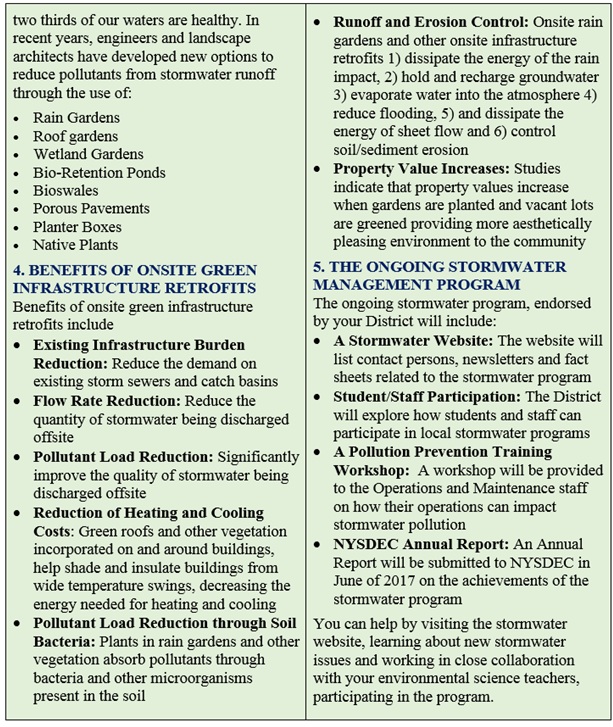
Newsletter #1
September 2014
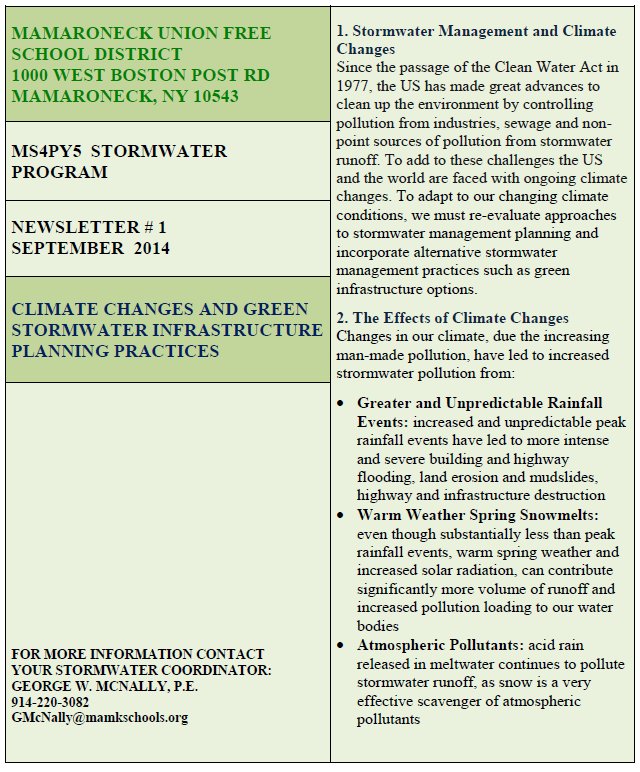
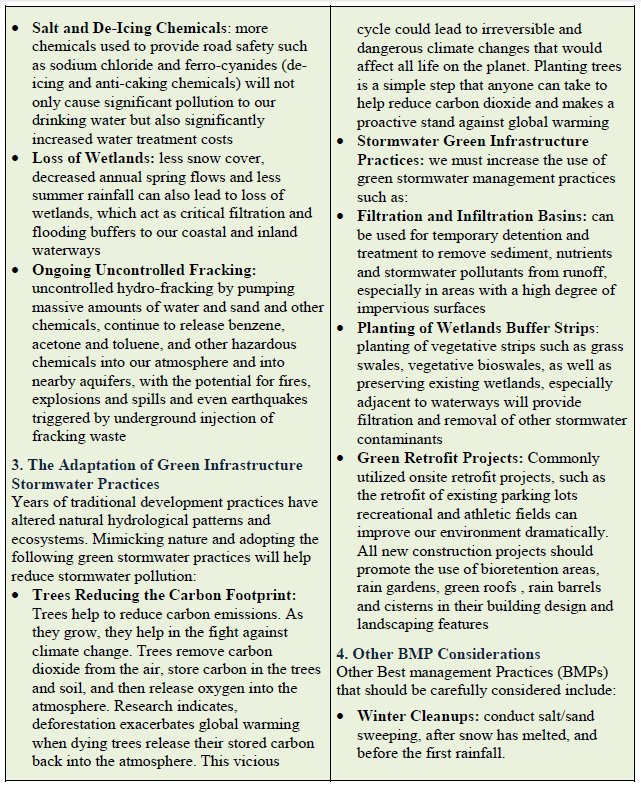
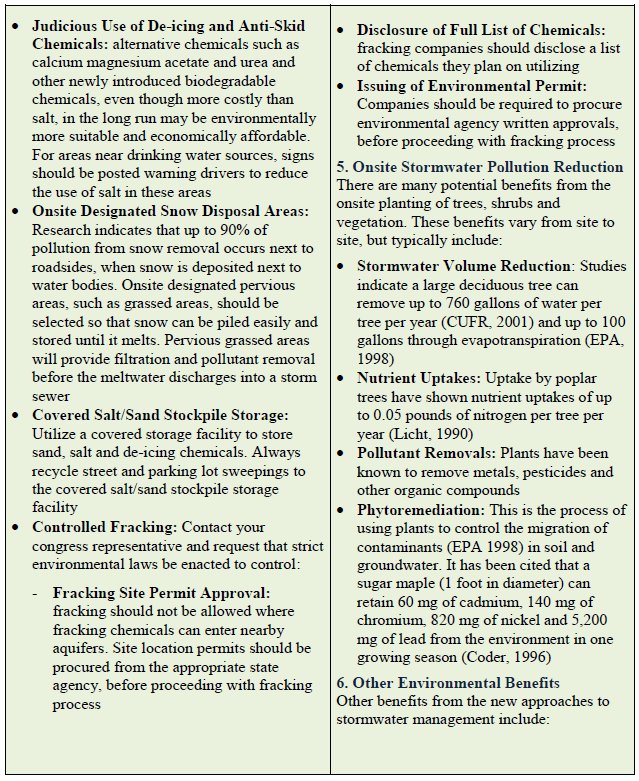
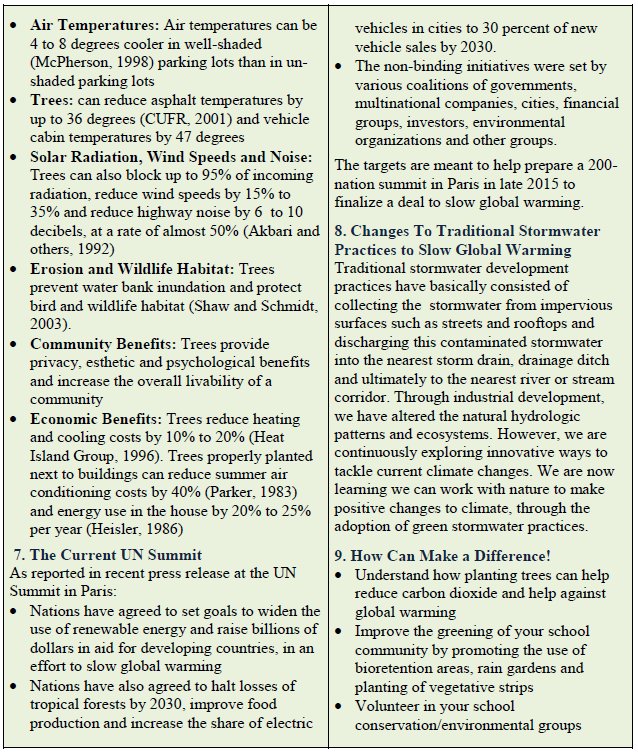
MUFSD
Fact Sheet #2
January 2014
Ongoing Storm Water Management Program
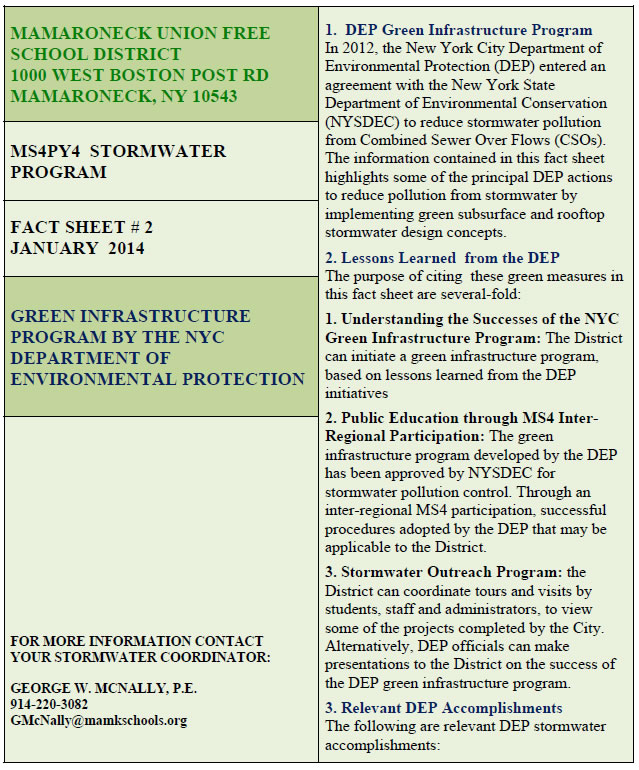
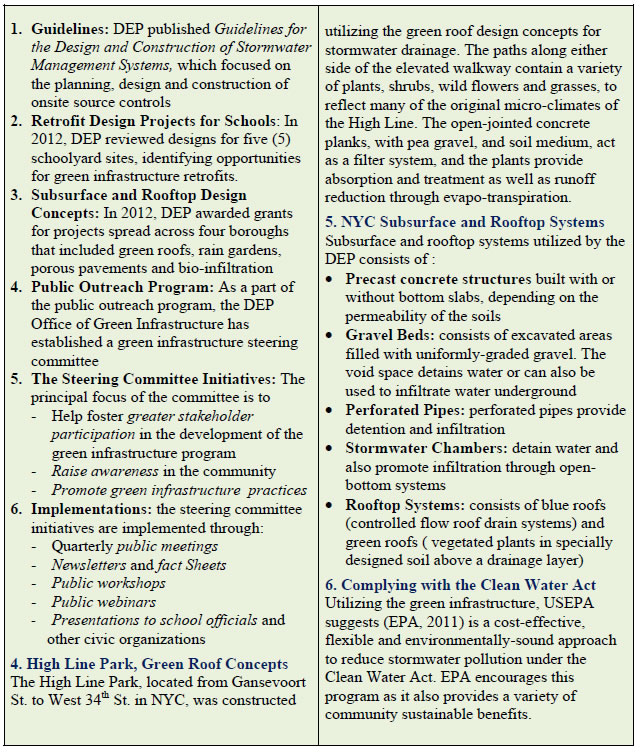
MUFSD
Fact Sheet #1
January 2014
Ongoing Storm Water Management Program
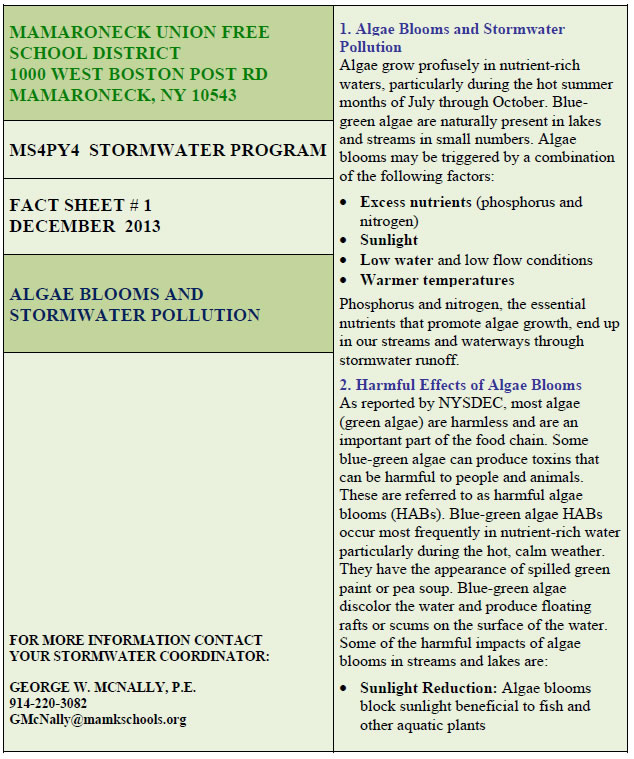
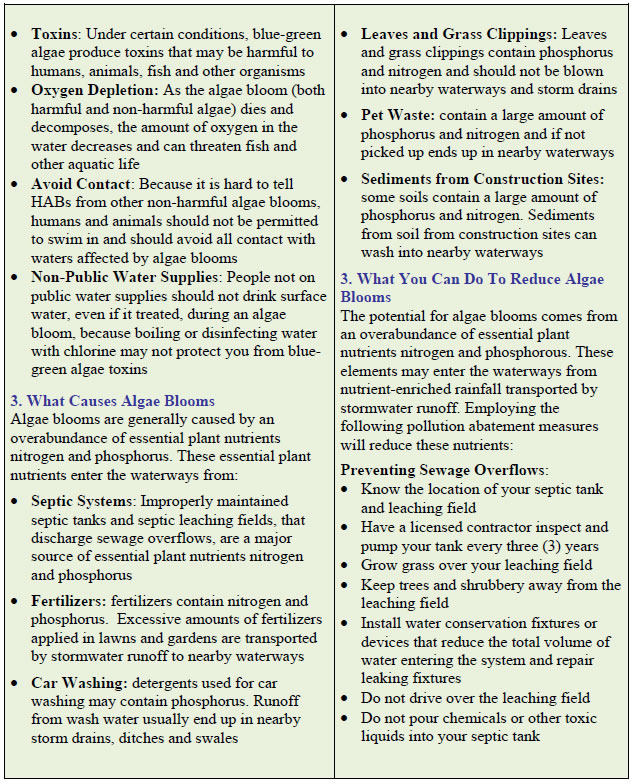
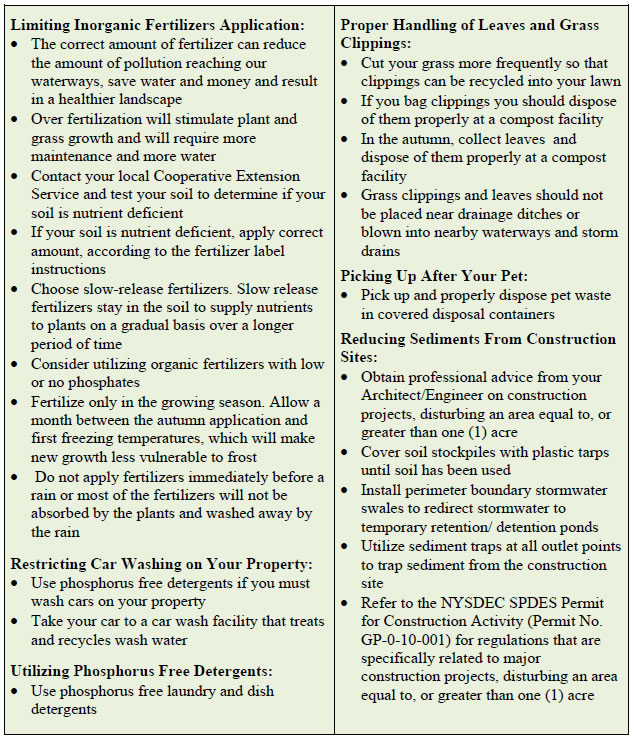
MUFSD
Newsletter #1
November 2013
Ongoing Storm Water Management Program
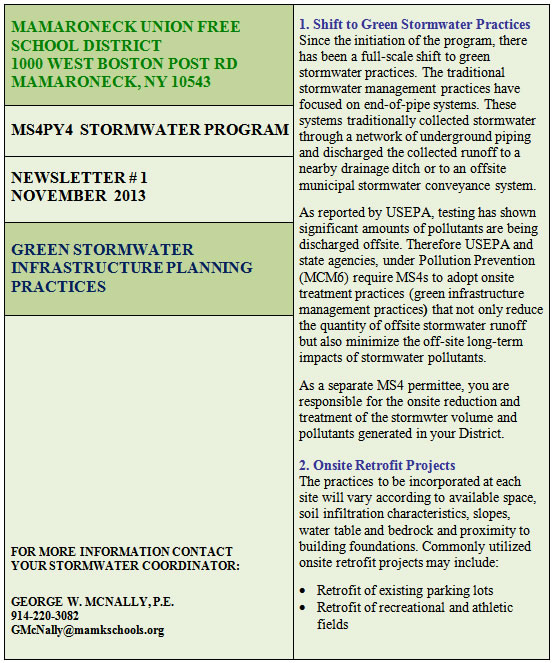
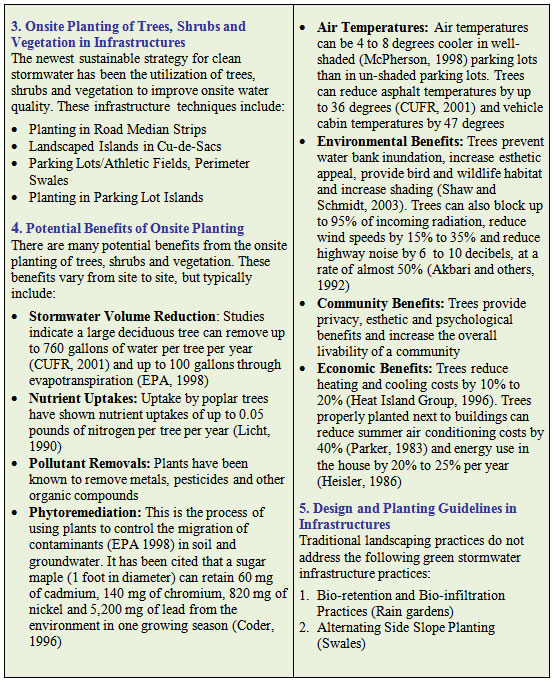
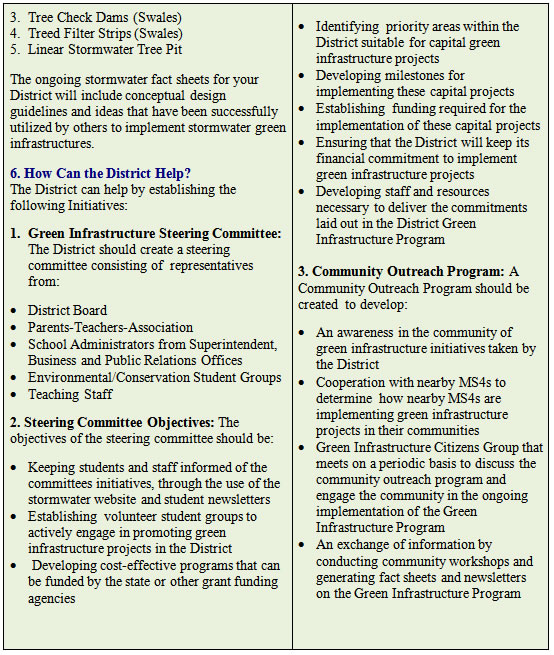
MUFSD
Newsletter #11
10/12/12
Ongoing Storm Water Management Program
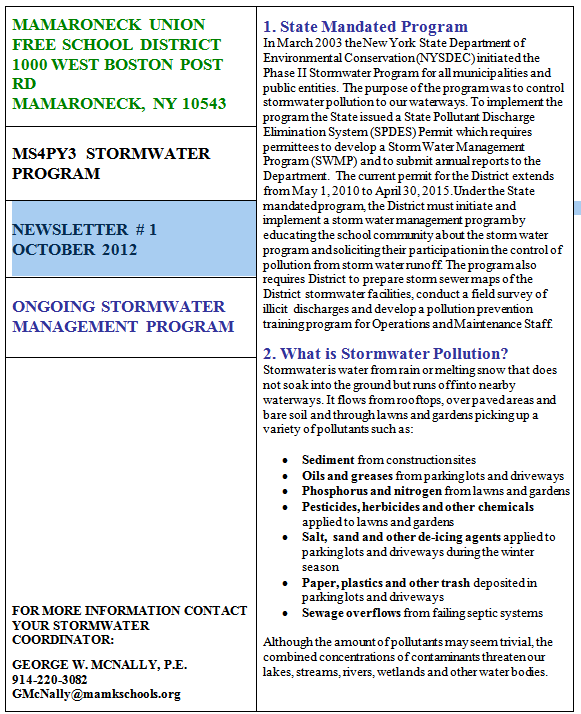
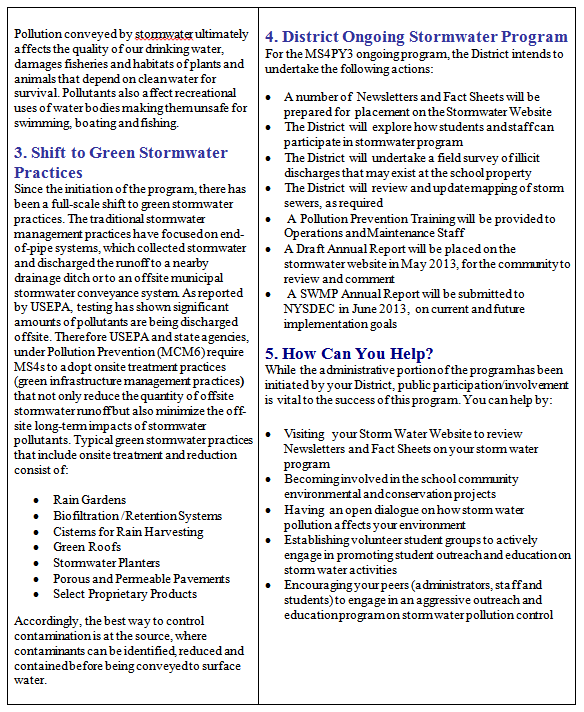
MUFSD
Newsletter #10
4/27/12
Ongoing Storm Water Management Program
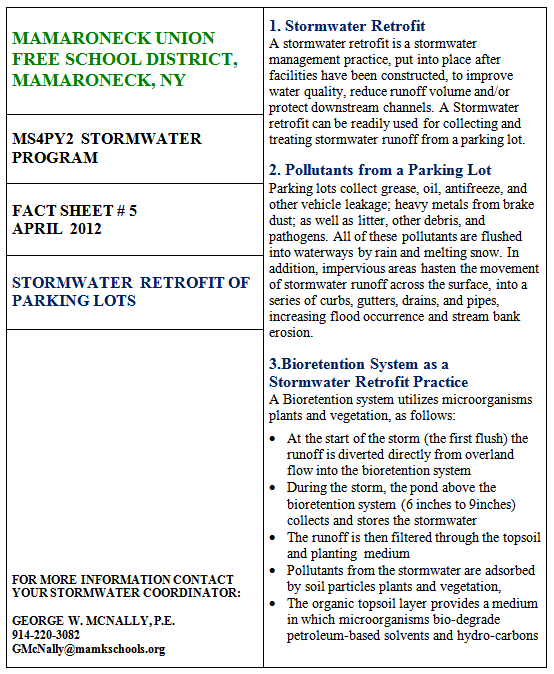
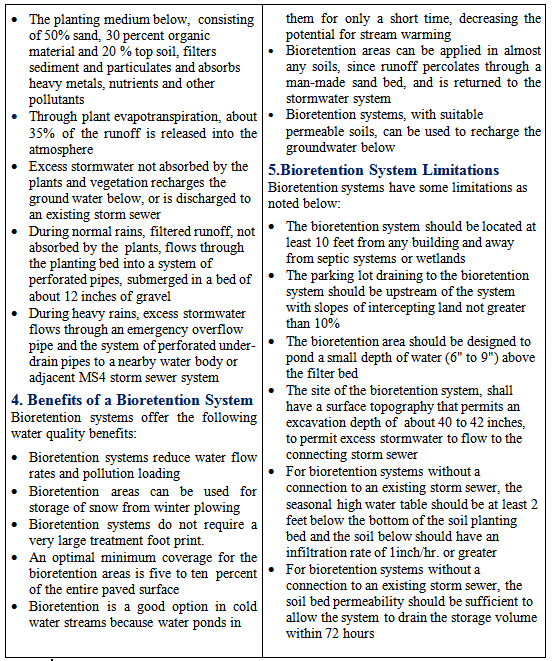
MUFSD
Newsletter #9
4/4/12
Ongoing Storm Water Management Program
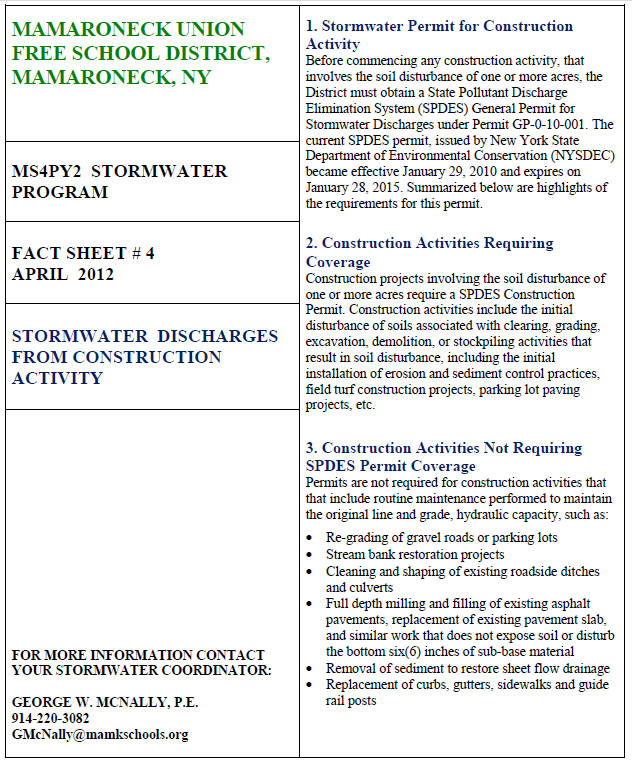
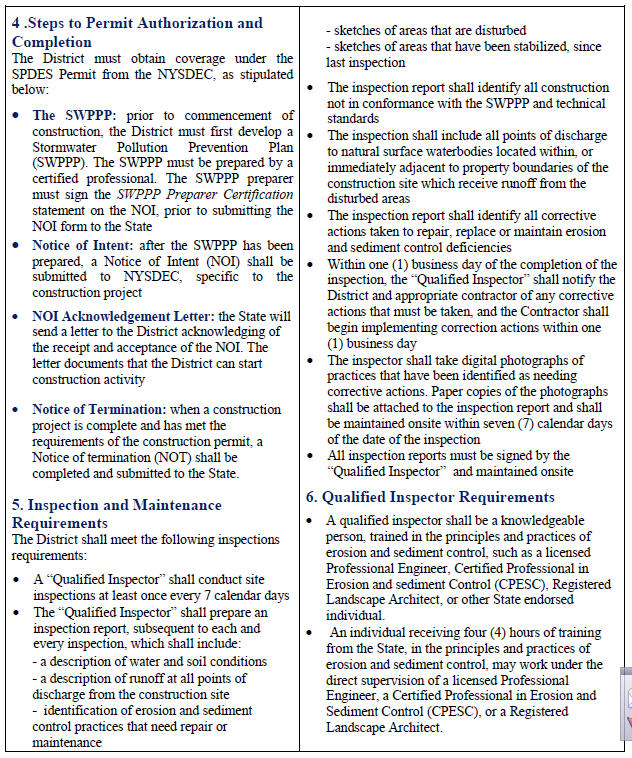
MUFSD
Newsletter #8
3/28/12
Ongoing Storm Water Management Program
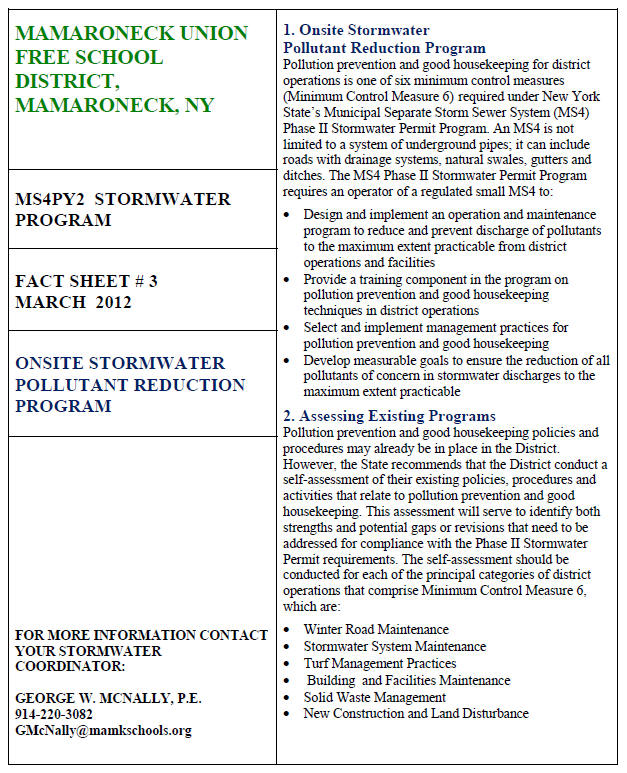
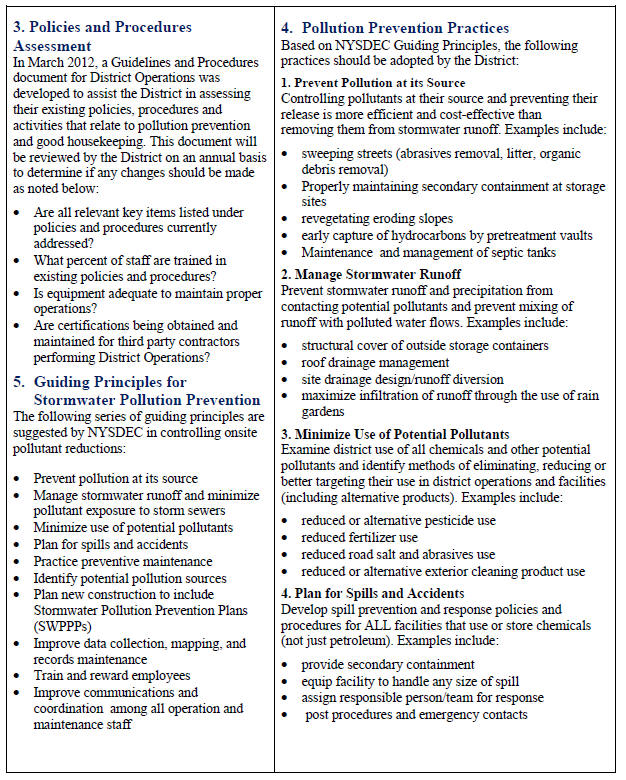
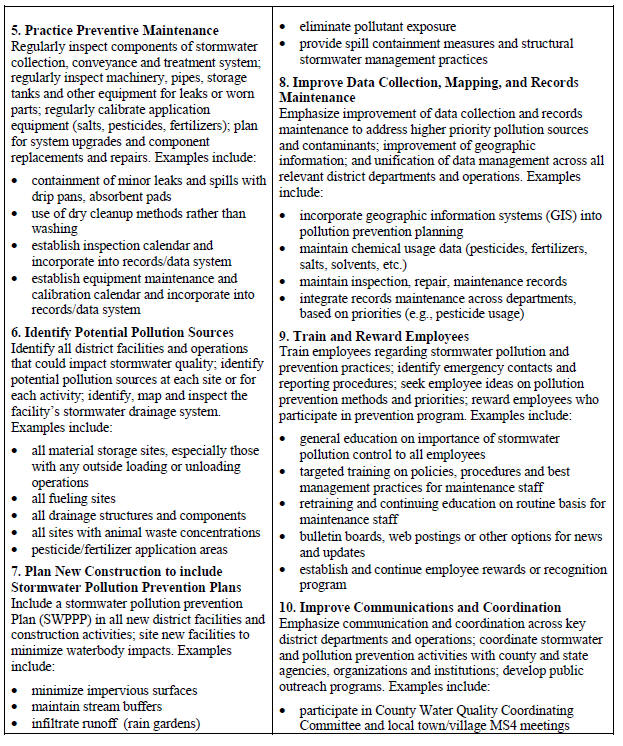
MUFSD
Newsletter #7
2/6/12
Ongoing Storm Water Management Program
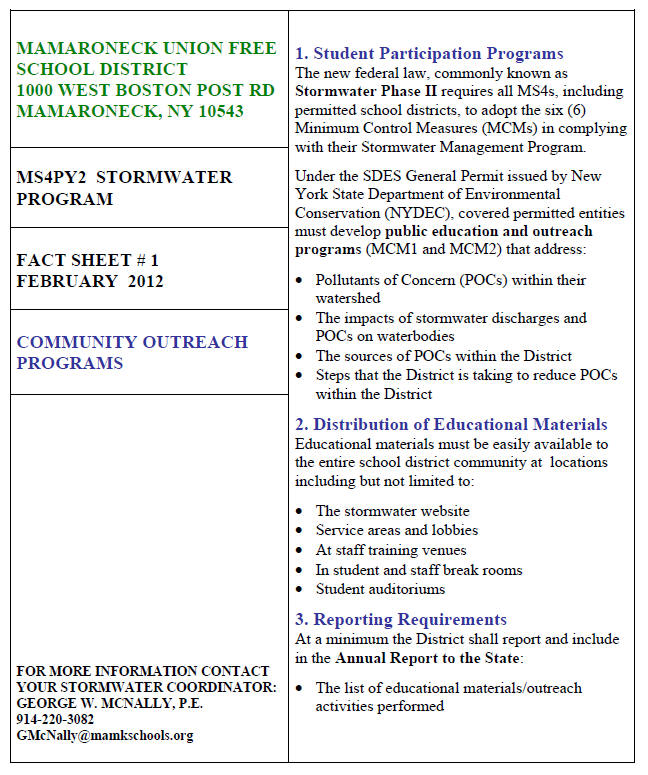
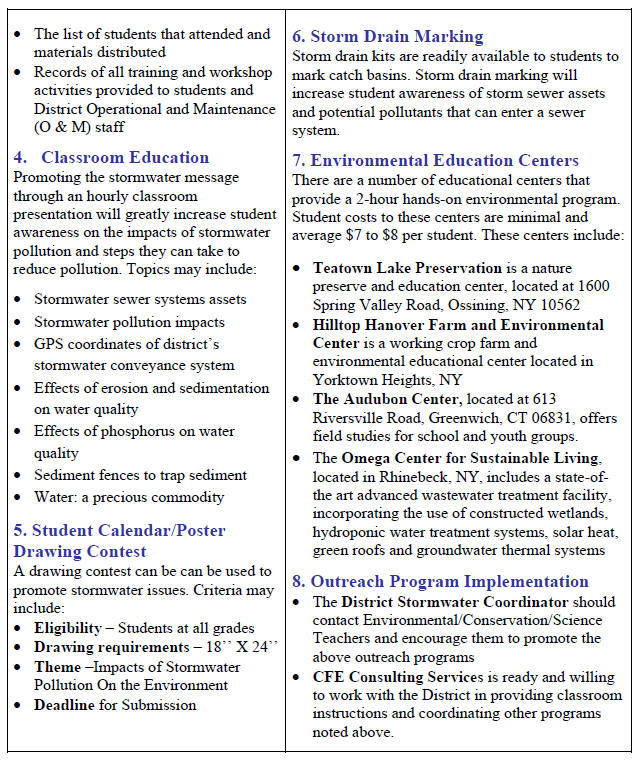
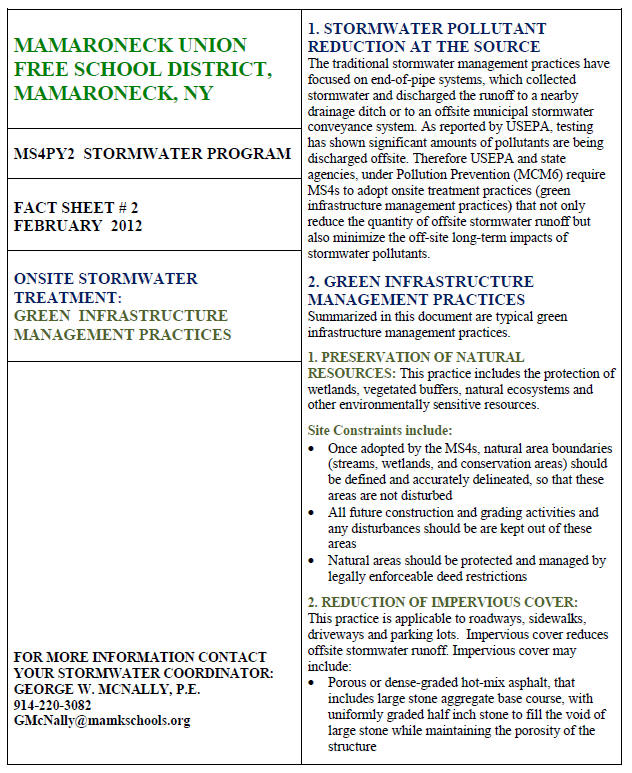
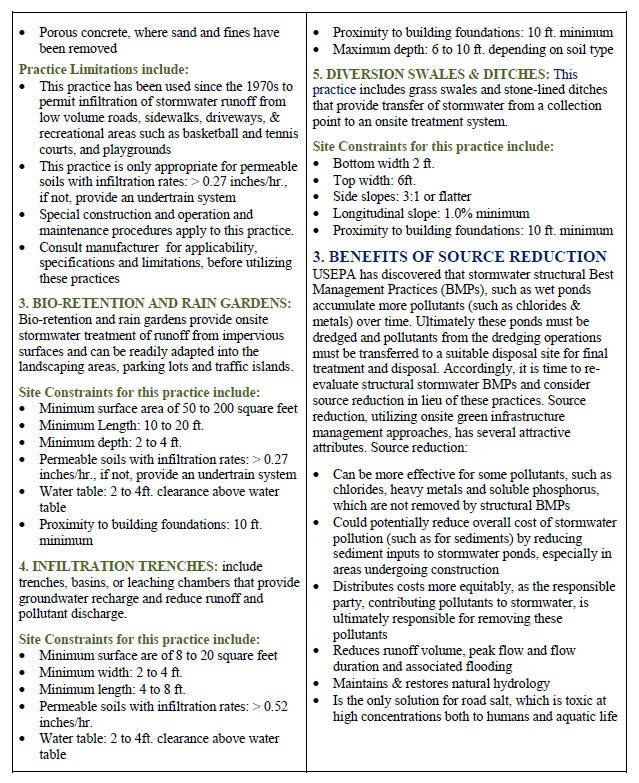
MUFSD
Newsletter #6
5/19/11
Ongoing Storm Water Management Program
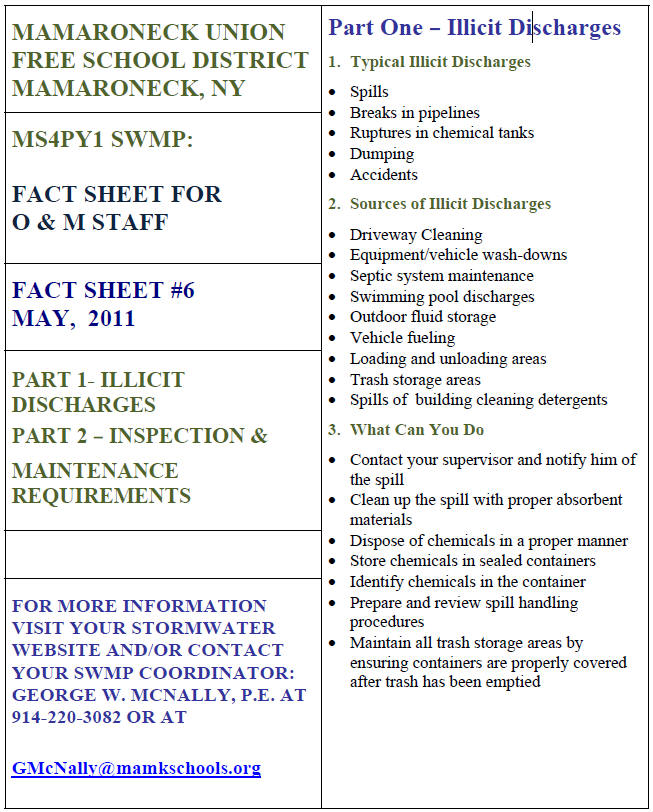
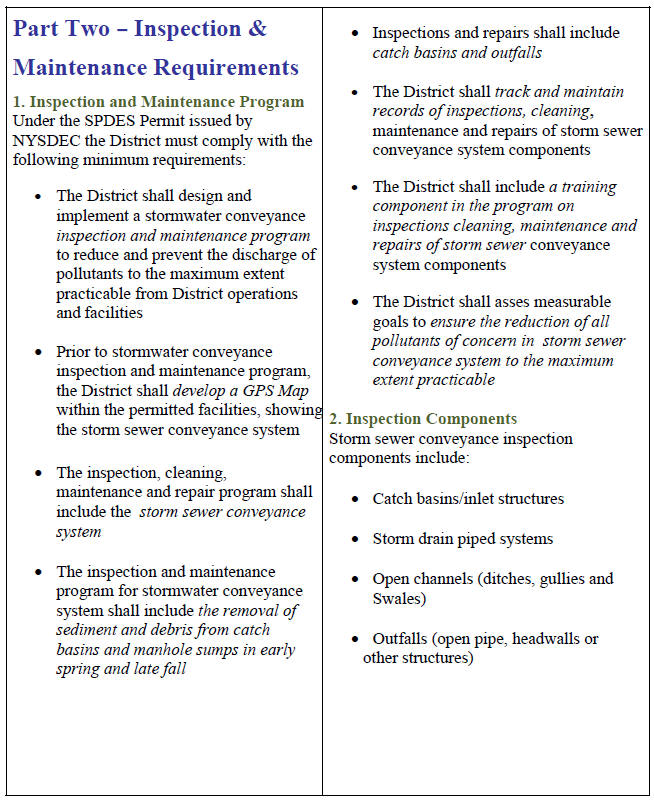
MUFSD
Newsletter #5
5/12/11
Ongoing Storm Water Management Program
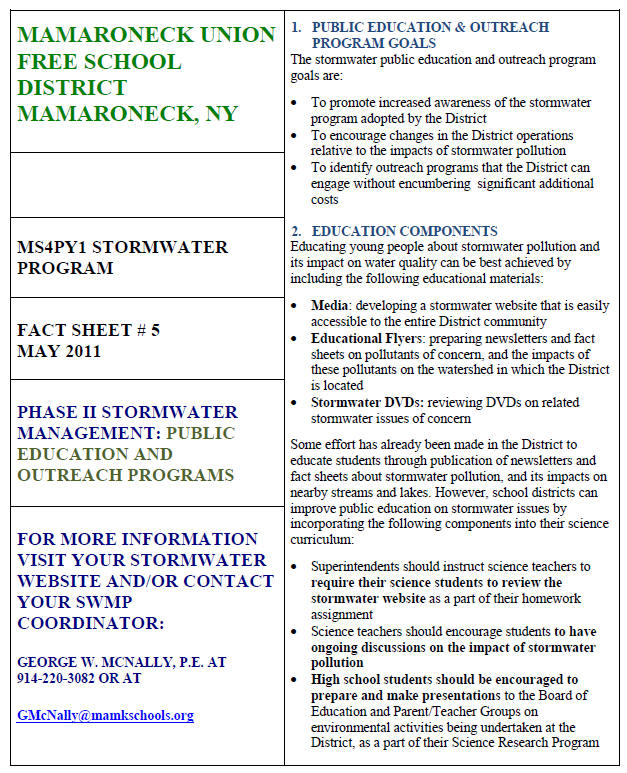
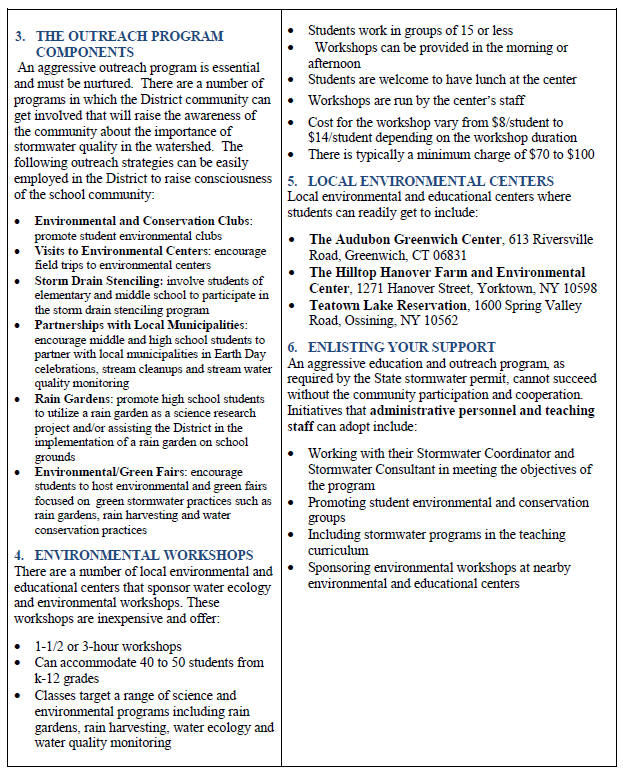
MUFSD
Newsletter #4
4/13/11
Ongoing Storm Water Management Program
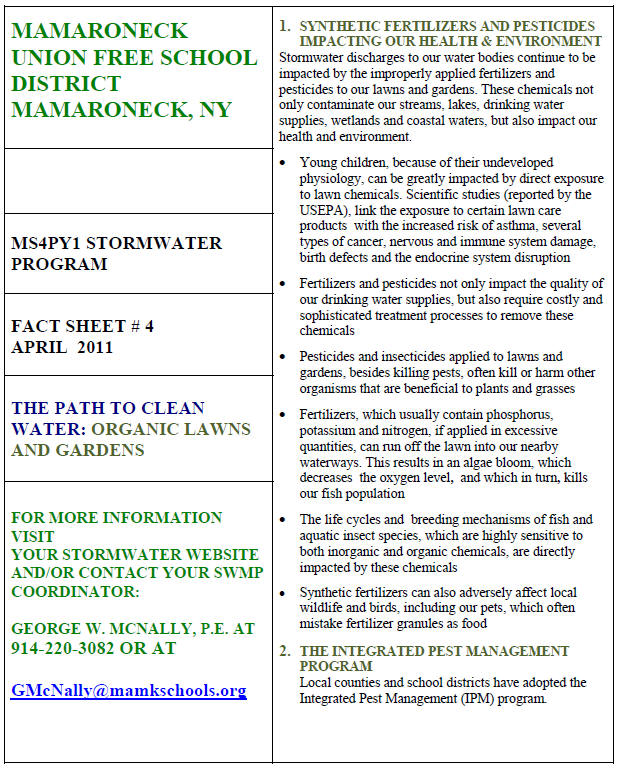
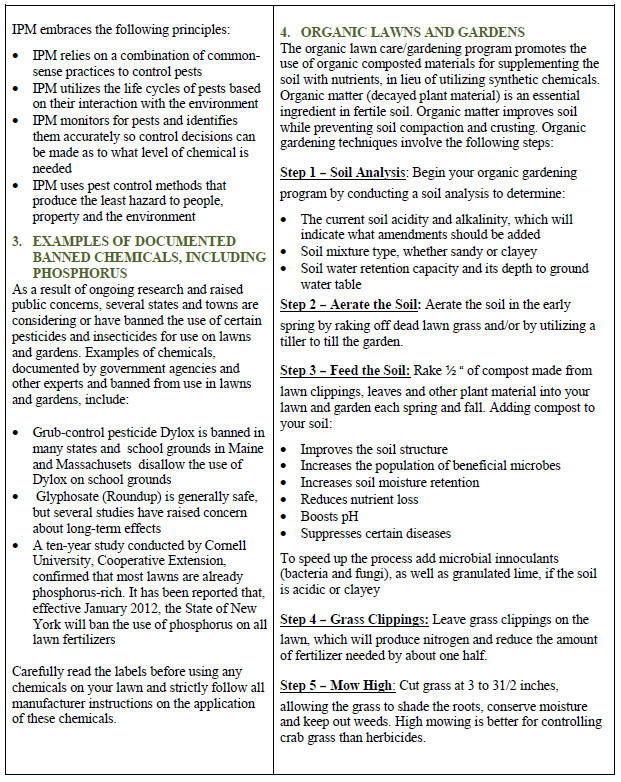
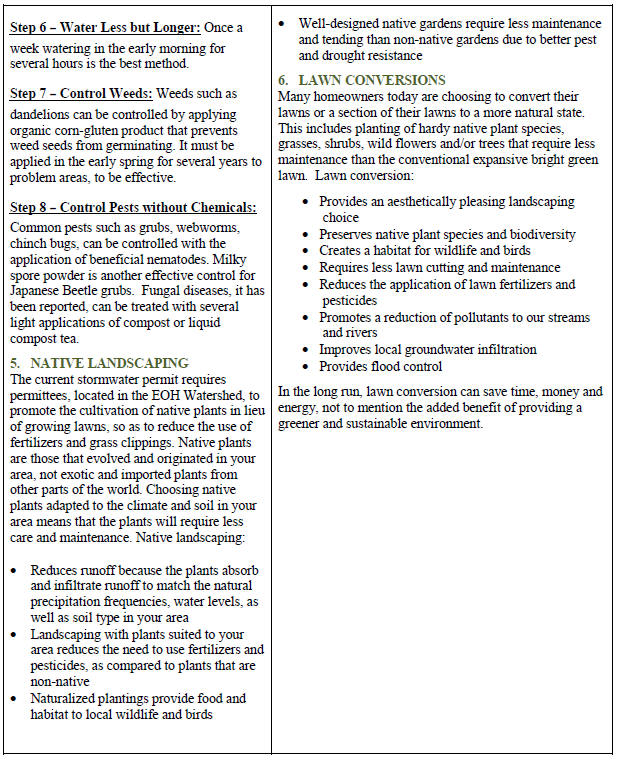
MUFSD
Newsletter #3
3/6/11
Ongoing Storm Water Management Program
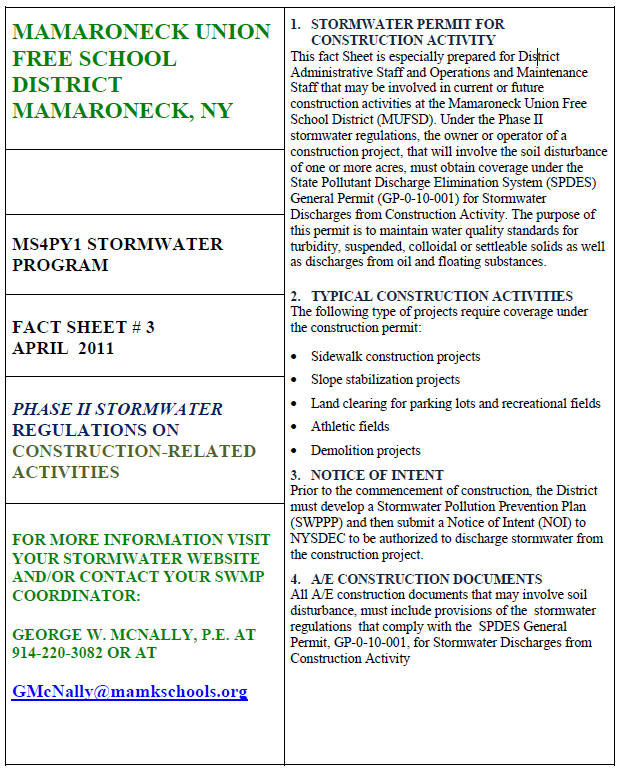
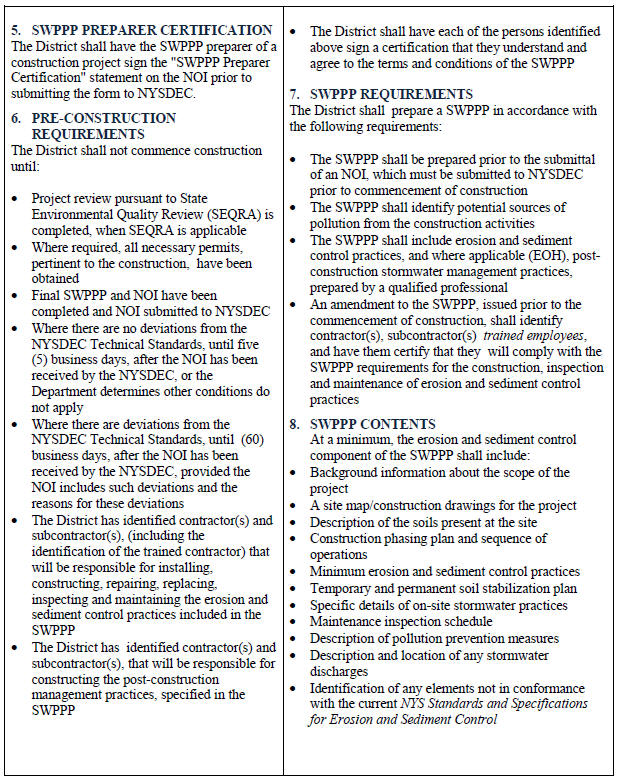
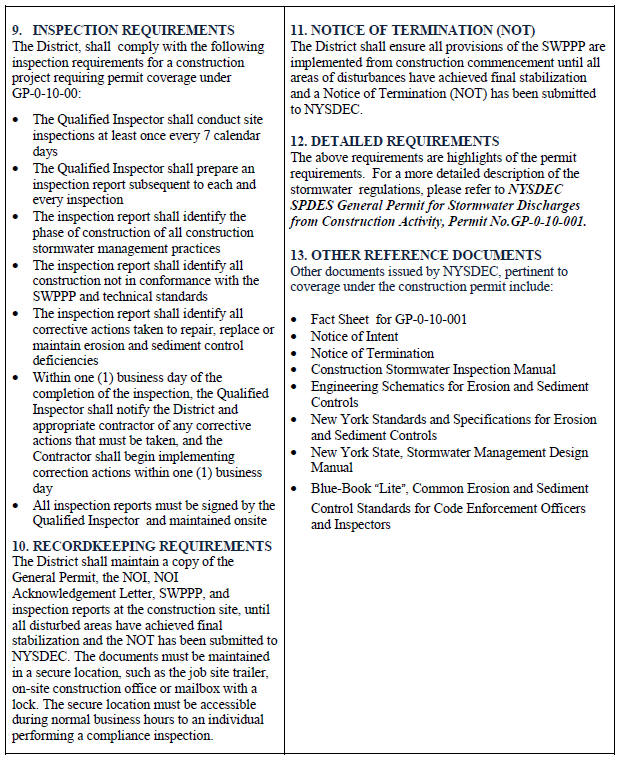
MUFSD
Newsletter #2
2/18/11
Ongoing Storm Water Management Program
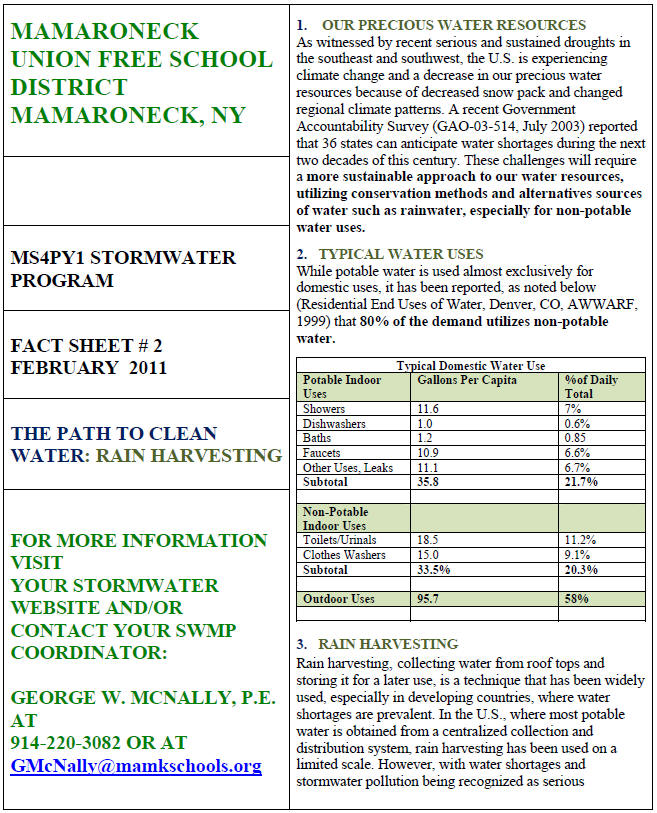
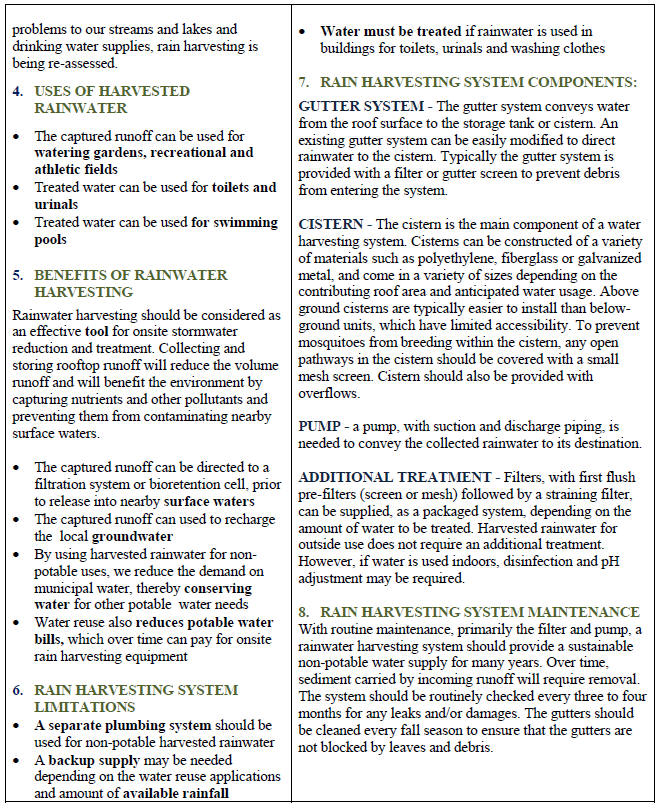
MUFSD
Newsletter #1
2/9/11
Ongoing Storm Water Management Program
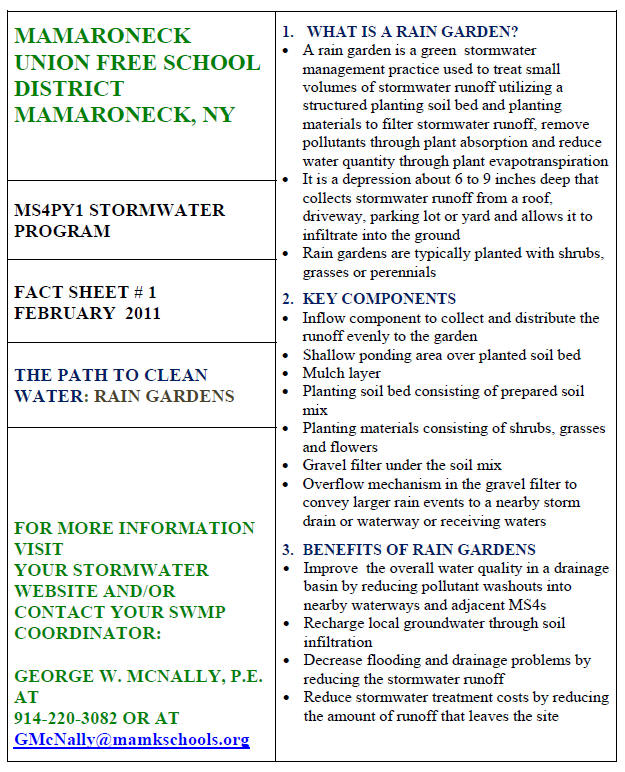
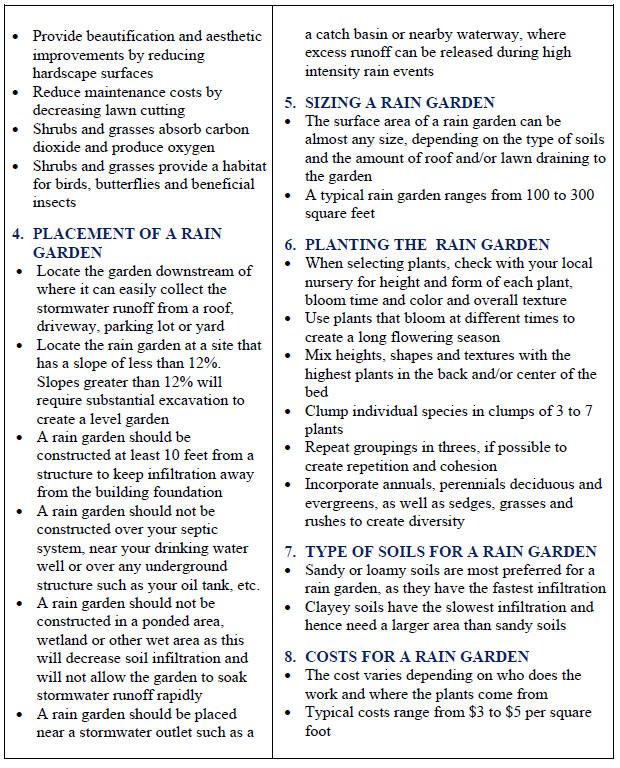
MUFSD
Newsletter
12/15/10
Ongoing Storm Water Management Program
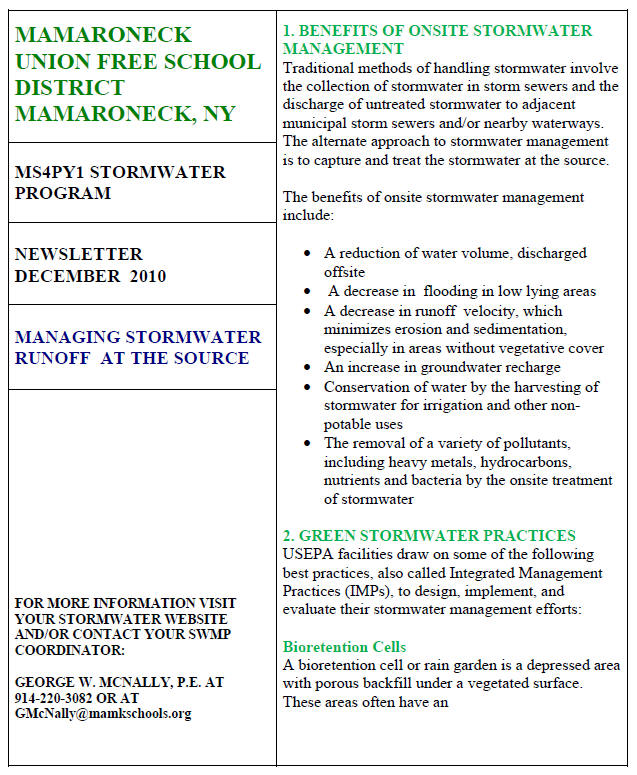
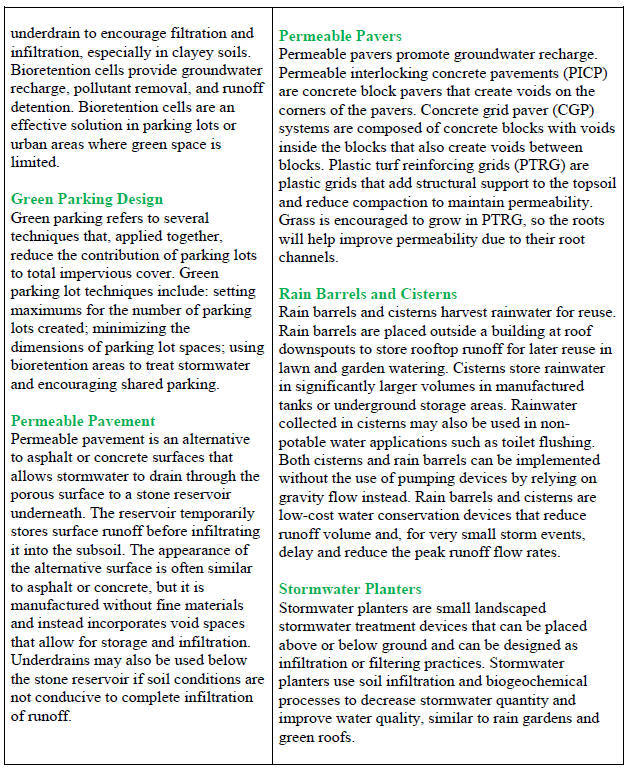
12/1/08
STORMWATER PERMIT
In March 2003, New York State Department of Environmental Conservation (NYSDEC) issued Phase II Stormwater Regulations to control pollutants from storm water runoff. Under these regulations, MUFSD applied for a permit by filing a Notice of Intent (NOI). The permit was issued for a five (5) year period from March 2003 to January 8, 2008. The permit required the district to initiate and implement a storm water management program which would reduce pollutants in stormwater discharges from the Mamaroneck High School and the Hommocks Middle School.
NEW SECOND TERM PERMITS
As part of the ongoing SWMP, new permits were issued for another two (2) year term, beginning on May 1, 2008 and extending to April 30, 2010. Coverage for MUFSD was automatically continued, after the initial permit expired on January 8, 2008
THE POLLUTANTS OF CONCERN
The Pollutants of Concern (POCs) in the in the Mamaroneck Basin and the Long Island Sound are:
· Nitrogen
· Pathogens
· Floatables
· Silt/sediment
The new permit requires the ongoing stormwater management to reduce the impacts of the above POCs from stormwater and non-stormwater discharges on the Mamaroneck and Long Island Sound Watersheds.
GIS STORM SEWER MAPPING
The new regulations require the district to develop a comprehensive Geographic Information System (GIS) Storm Sewer Map of the stormwater conveyance system, that will include:
· Field verification of the District’s Storm Sewershed Boundaries
· Field verification of all outfalls
· Dry weather reconnaissance survey of the outfalls
IDENTIFICATION & ELIMINATION OF ILLICIT CONNECTIONS
The new regulations require the district to locate all non-stormwater discharges and illicit connections (hot spots) in the storm sewer conveyance system and to eliminate illicit connections from the storm drain system.
CONSTRUCTION AND POST-CONSTRUCTION ACTIVITY
As required under the previous permit, the District must comply with the adopted Construction-Related Activity policy and procedures document, to address all construction activity at the site as follows:
· All land disturbance in construction and post-construction sites greater than or equal to one (1) acre, shall be constructed in accordance to New York Standards and Specifications for Erosion and Sediment Control
· All land disturbance for sites greater than or equal to one (1) acre will include Storm Water Pollution Prevention Plans (SWPPPs) prepared and reviewed by design professionals in accordance to NYSDEC regulations
PROGRAM FOR REDUCTION OF POCs
Under the new permit, the District must develop, implement and enforce a program for:
· Detection of POCs in the District
· Identification of operations that will reduce POCs in the District
· Formalization of Good Houskeeping Procedures to reduce POCs in the District
MUFSD
Newsletter #1
Ongoing Storm Water Management Program
FROM YOUR YARD AND INTO OUR STREAMS
Stormwater runoff is rainwater that runs off the driveways, roofs, paved parking lots and other impervious surfaces. When the rainwater hits the impervious ground, it cannot infiltrate into the soil and therefore, it travels over the impervious surfaces collecting any debris, salt, oil and greases in its path, and discharging these pollutants into nearby waterways, streams and lakes.
In March 2003 the New York State Department of Environmental Conservation issued new regulations, requiring municipalities and public entities such as your school district, to control pollutants from storm water runoff. A permit was issued by the State, requiring the district to initiate and implement a storm water management program by educating the school community about the storm water program and soliciting their participation in the control of pollution from storm water runoff.
ONGOING STORM WATER MANAGEMENT PROGRAM
As part of this ongoing stormwater program, the district intends to undertake the following actions:
· A number of Newsletters and Fact Sheets will be prepared for placement on the Stormwater Website
· The district will explore how students and staff can participate in the stormwater program
· The district will undertake a field survey of illicit stormwater discharges that may exist at the high school and middle school campuses
· A Pollution Prevention Training will be provided to Operations and Maintenance Staff
· A Public Information Meeting will be held in May 2007 to notify the school community on the ongoing stormwater program
· An Annual Report will be submitted to State in May 2007, on past and future implementation goals
HOW CAN YOU HELP?
While the administrative portion of the program has been initiated, school participation is vital to the success of this of this program. You can help by:
· Visiting your Storm Water Website to review Newsletters and Fact Sheets on your storm water program
· Becoming involved in the school community environmental and conservation projects
· Having an open dialogue on how storm water pollution affects your environment
· Establishing volunteer student groups to actively engage in promoting student outreach and education on storm water activities
· Encouraging your peers (administrators, staff and students) to engage in an aggressive outreach and education program on storm water pollution control
